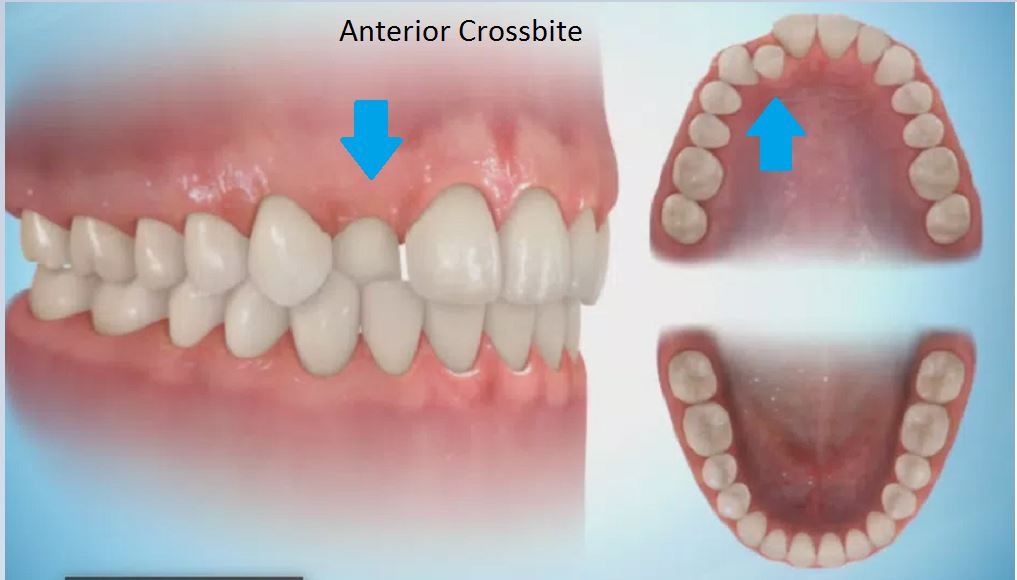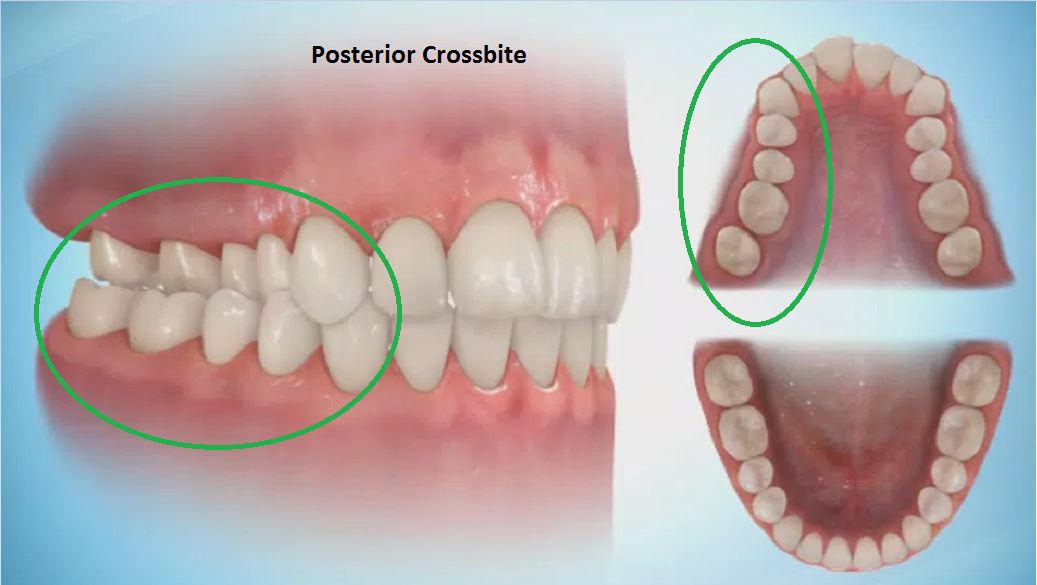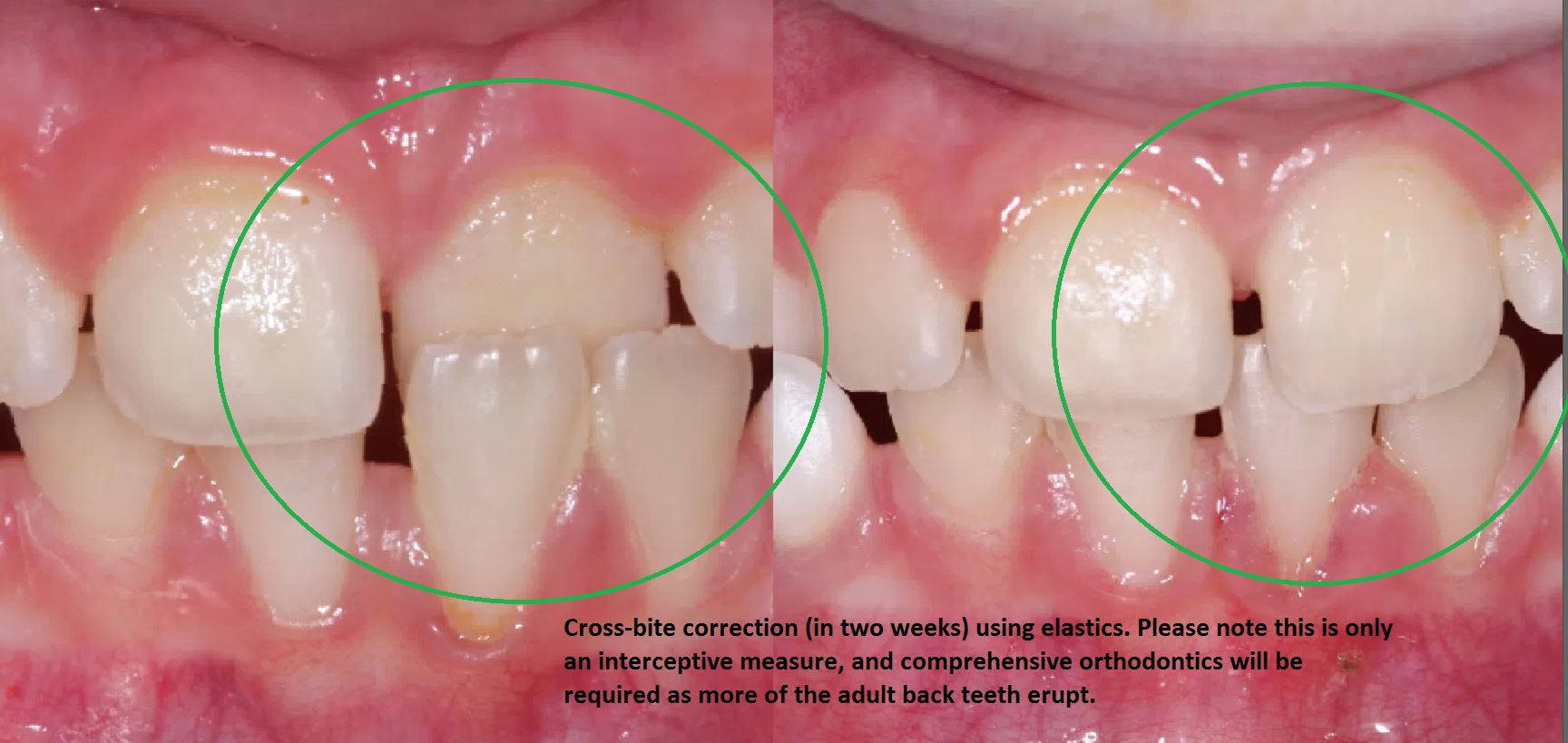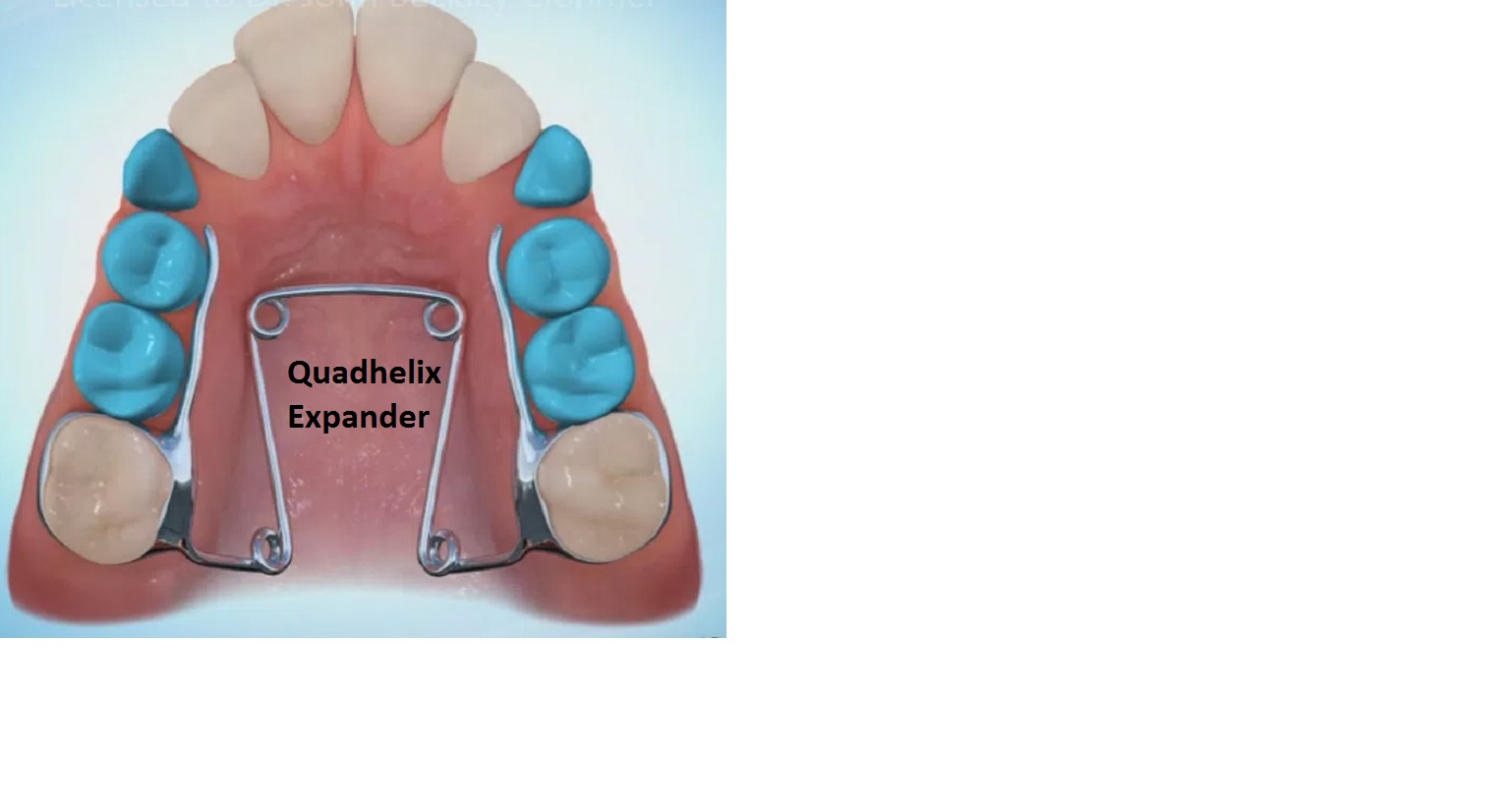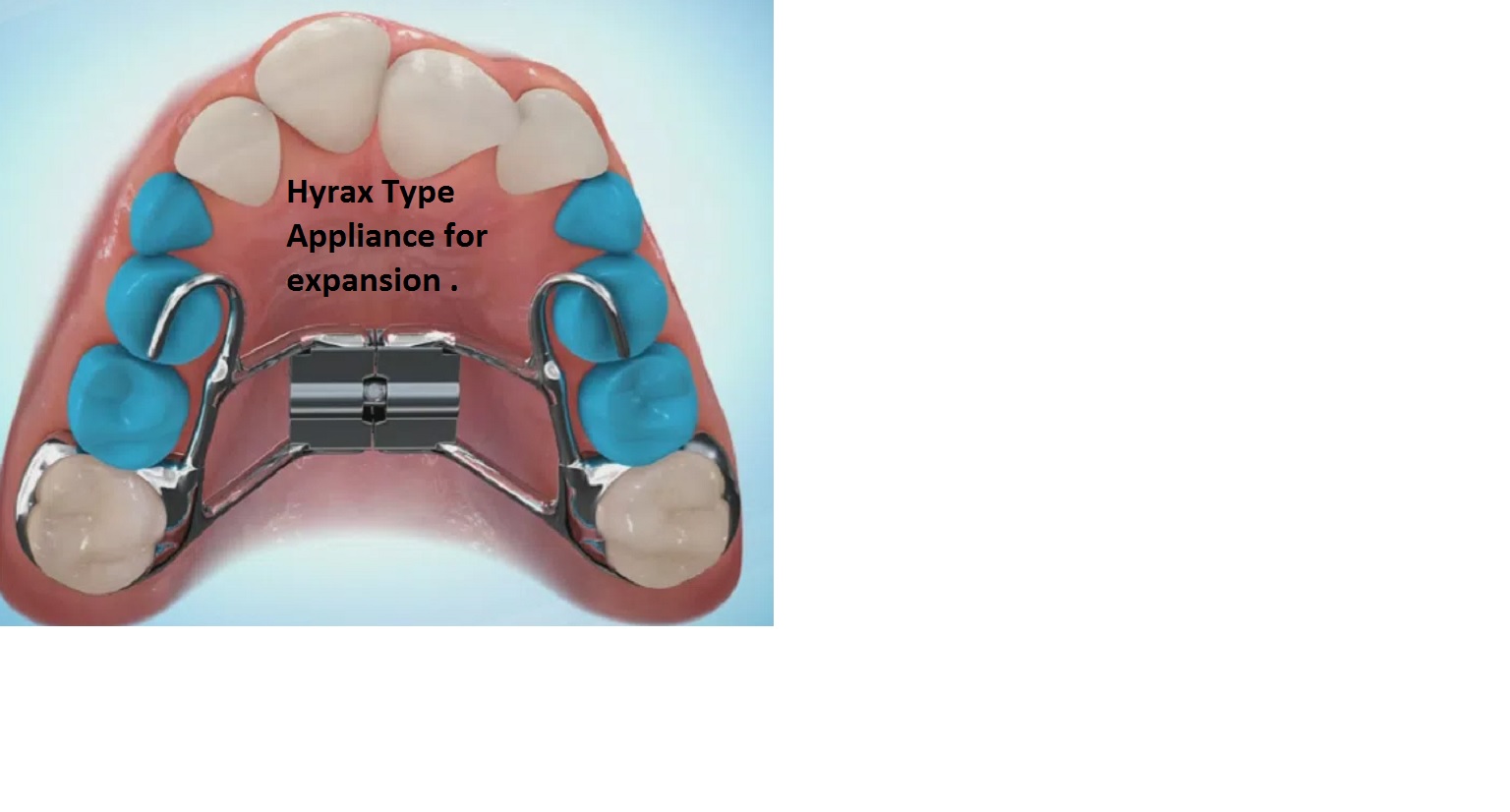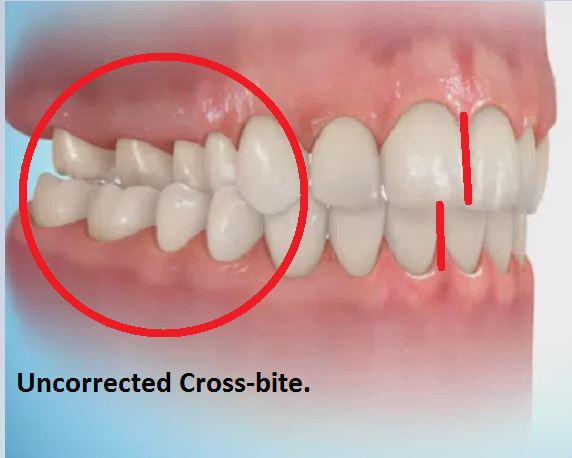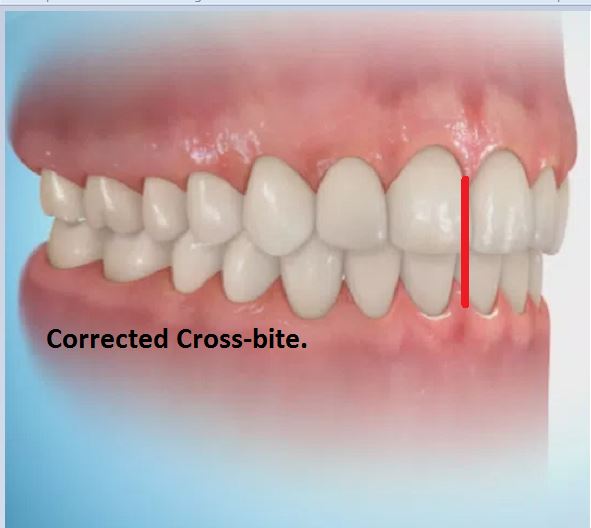What is a cross-bite?
A cross-bite exists when an upper tooth bites inside the lower teeth. Cross-bites are common with both the baby and the adult teeth. There are cross-bites which involve the front teeth (anterior cross-bites) and cross-bites which involve the back teeth (poterior cross-bites).
Cross-bites are common approximately 15-20% of children with baby teeth have cross-bites. Only a small percentage of these self correct as the adult teeth come through, but also some people develop a cross-bite for the first time as the adult teeth erupt.
Corrrection of an anterior cross-bite.
Sometimes an anterior cross-bite can be corrected in two weeks using elastics if there is sufficient space for the tooth to straighten up. This is only done as a quick interceptive measure from age 7-8 onwards. It will not (obviously ) eliminate the need for comprehensive treatment later. This brief (2 weeks ) treatment maybe performed for the following reasons.
(1) Patient/ Parent doesn’t like the appearance of the crossbite.
(2) It maybe associated with a forced forwards shift of the lower jaw (mandibular displacement).
(3) Sometimes the lower incisor (tooth) can be pushed forwards (to an extent) out of the lower jaw and get some gingival recession (the gum falls off the front of the lower tooth ).
(4) Sometimes one or both of the teeth in the cross-bite get excessive tooth wear.
Correction of a posterior cross-bite.
A posterior cross-bite can be corrected in many ways. If it is mild fixed appliances braces will correct the posterior cross bite as they straighten the teeth. Fitting an expander in these circumstances does not confer any additional benefit (on the patient!).
If it is more severe, then an inside type of expansion appliance or “expander” maybe used.
Two commonly used fixed expanders are Quadhelix and the Hyrax, they are cemented into place and have been shown to be more successful than removable expanders which require greater compliance with the treatment.
(1) Quadhelix Appliance.
(2) Hyrax Appliance.
A posterior crossbite can cause the lower jaw to slide (displace) to one side. Creating an asymmetry of the bite (red circle) and a midline discrepancy (red lines).
Expansion of the upper jaw to eliminate the lower jaw shift (displacement) will correct the asymmetry in most cases, others however may have a continuing asymmetry which may require further treatment in due course. If you have a cross-bite, you should consider visiting an orthodontist for advice on the most appropriate treatment.
………………………………………………………………………………………………….
This orthodontic blog was written by Dr John Buckley,who is a specialist orthodontist at Clonmel Orthodontics in Clonmel County Tipperary, Ireland.He is both Clonmel’s most qualified and most experienced orthodontist.
Clonmel Orthodontics provides orthodontics to county Tipperary and the neighbouring counties of Waterford, Kilkenny, Limerick,Cork , and beyond.
Dr Buckley has practised as a specialist orthodontist in Clonmel for over 20 years. In addition to his orthodontic qualifications which he held before he commenced orthodontic practice , Dr Buckley was awarded a First class masters degree in Lingual orthodontics from the University of Hannover medical school (MHH) in 2012. This masters degree is directed by Professor Dirk Wiechmann who is the inventor of both the incognito™ and win™ lingual appliances. Dr Buckley was the first orthodontist in Ireland to be awarded this qualification. In 2016 he was accepted as an active member of the European Society Of Lingual Orthodontics (ESLO). To become an active member it is necessary for candidates to submit the records of finished lingual cases. If the cases are deemed to be of a sufficiently high standard then the candidate is accepted as an active member of ESLO. Dr Buckley is the first and only orthodontist in Ireland to be accepted as an active member of ESLO.


